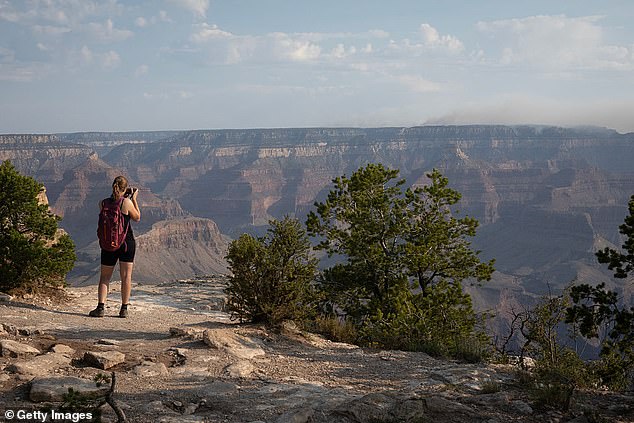
New Study Unveils Grand Canyon’s True Geologic Evolution and Ancient Origins
True Origin of the Grand Canyon Linked to Meteor Impact, Study Reveals
By Sonya Gugliara
Published: 06:45 BST, 16 July 2025 | Updated: 06:59 BST, 16 July 2025
The Grand Canyon’s awe-inspiring landscape may owe its formation to a cataclysmic meteor strike that rocked Arizona over 56,000 years ago, a groundbreaking study published in Geology suggests. While tectonic shifts and erosion from the Colorado River have long been credited with carving the 277-mile-long canyon, new research ties its creation to a colossal asteroid impact that formed Arizona’s Meteor Crater.
[Image: Grand Canyon aerial view showing its steep, layered rock formations. Caption: The Grand Canyon’s formation may be linked to a meteor-triggered landslide.]
Meteor Crater’s Role
Located 130 miles southeast of the Grand Canyon’s South Rim, the Meteor Crater was created by a massive iron-nickel asteroid. Researchers now propose that the impact triggered devastating landslides within the canyon, reshaping its geology. These landslides blocked the Colorado River, forming a vast ancient lake (paleolake), which later unleashed catastrophic floods that further sculpted the canyon.
“The timing aligns perfectly,” said Professor Karl Karlstrom, co-author of the study. His team analyzed driftwood deposits in Stanton’s Cave, 150 feet above the river, which have baffled scientists for decades. The wood’s age matches both the Meteor Crater impact and landslide—roughly 56,000 years old.
[Image: Meteor Crater’s rugged, bowl-shaped landscape. Caption: The 56,000-year-old Meteor Crater may have triggered landslides in the Grand Canyon.]
From Paleolakes to Floods
The blocked river created a dam, allowing water to accumulate into a paleolake. Once the dam collapsed, torrential floods surged downstream, eroding rock layers and depositing driftwood high above the riverbed. “This explains why past flood models fell short,” Karlstrom noted.
[Image: Colorado River winding through the canyon. Caption: Landslides may have dammed the Colorado River, forming ancient lakes and floods.]
Modern Challenges
The study emerges as the Grand Canyon faces new threats. A wildfire—the Dragon Bravo Fire—recently ravaged the North Rim, destroying historic structures, including parts of the Grand Canyon Lodge. The National Park Service has closed the area for the rest of 2025.
[Image: Burned remnants of Grand Canyon Lodge. Caption: The Dragon Bravo Fire caused significant damage to the North Rim’s infrastructure.]
Rewriting Geological History
While the Colorado River’s erosion remains central to the canyon’s formation, this study highlights how extraterrestrial events could accelerate Earth’s geological evolution. As researchers continue to explore Arizona’s interconnected landscapes, the Grand Canyon’s story grows ever more dramatic.
For more updates, follow DailyMail.com.


